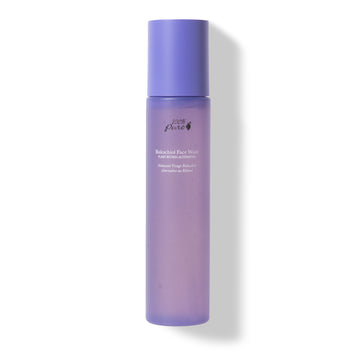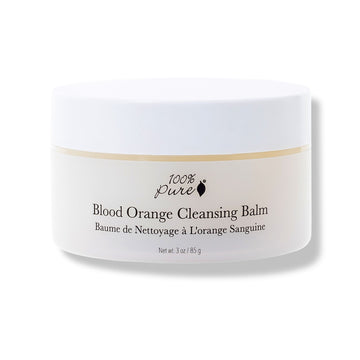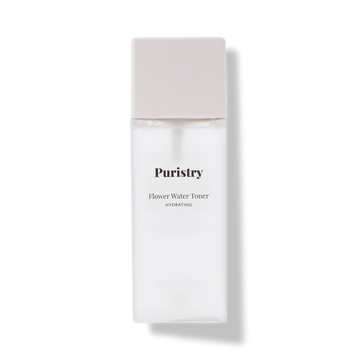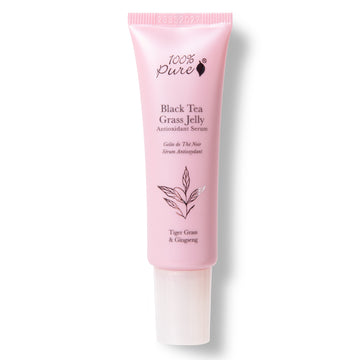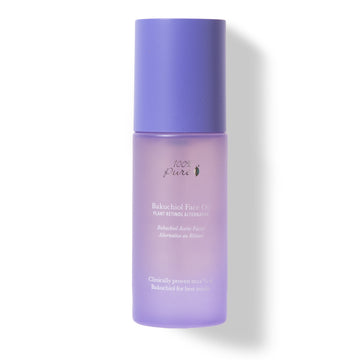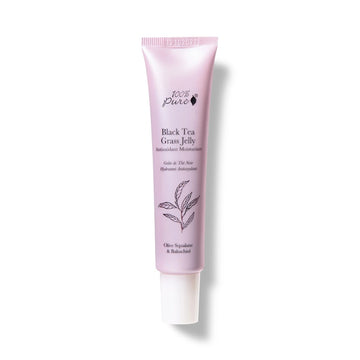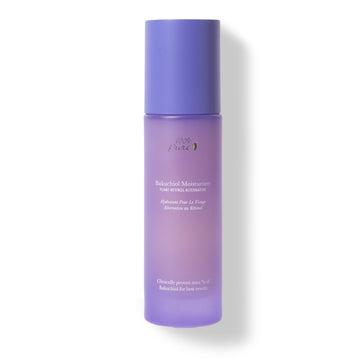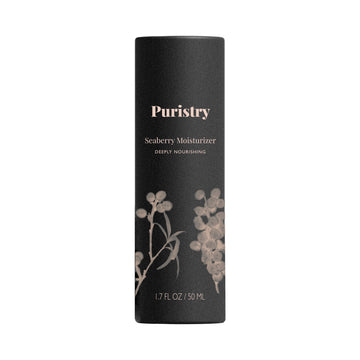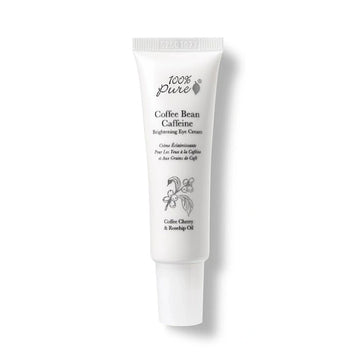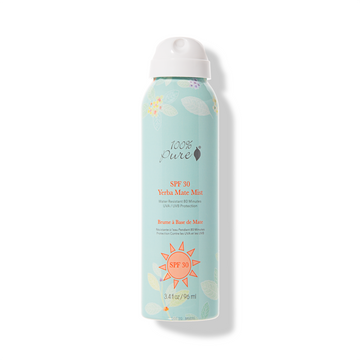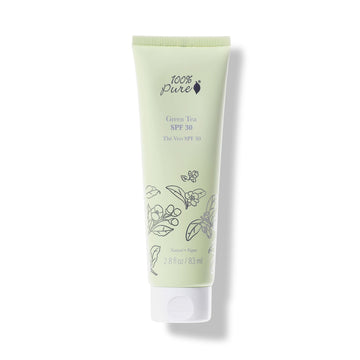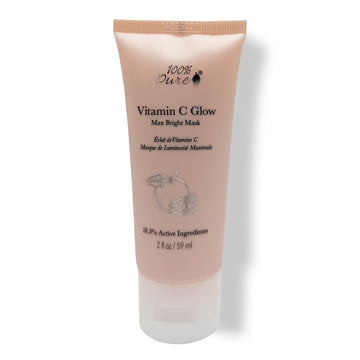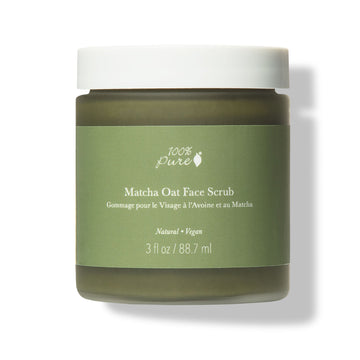Risk factors and prevention measures - plus from skincare products to cosmetics, which ingredients put you more at risk for breast cancer, and how to keep your breasts healthy
Written by: 100% PURE®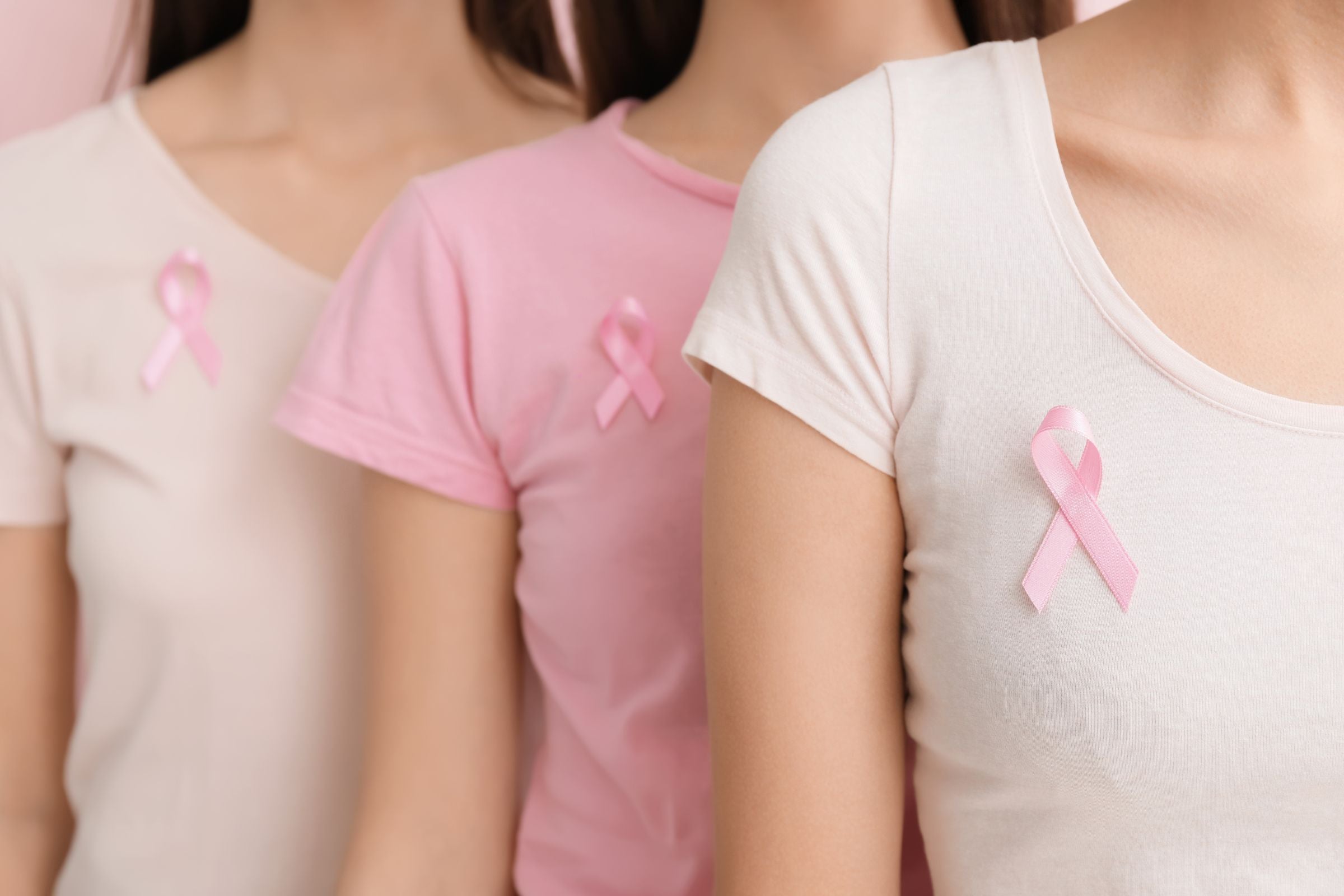
If the months had a hierarchy, October would likely rank near the top for its near-perfect temps, pumpkin spice everything, and candy hunting night - but there is something that reigns even greater and is of the utmost importance: breast cancer.
This month marks nearly 40 years of raising awareness about breast cancer. In recognition of the brave breast cancer warriors and beloved pink ribbon movement, we wanted to help spread awareness about the risk factors, detection, and some breast cancer prevention strategies.
We are using our voice to spread awareness of cancer-causing ingredients in beauty and skincare products. We rise in support of breast cancer and how to make our breasts’ – and our skin’s health priority number one.
If there was a time we’d go to the greatest lengths to find out, it would be discovering a crystal ball that could tell us about anyone likely to get any cancer, especially when it affects the breasts. Breast cancer is of utmost importance because it’s the second leading cause of cancer death among women overall and the leading cause of cancer death among Hispanic women.
Since breast cancer does not single anyone out, who is most at risk for the disease? It’s due to a combination of factors; the top two being a woman and aging – those risk factors accounting for 70 percent of breast cancer cases alone. But for the other percentage, the following other higher to lower range of risk factors for the disease include:
Genetics: Certain genes or changes in other genes; strongest risk.
Radiation Therapy: Exposure to large, excessive amounts of radiation; strongest risk.
Prior Breast Cancer: A prior diagnosis of breast cancer; moderate risk.
Family History: If a direct family member (mother, sister, or daughter) has been diagnosed as; moderate risk.
Breast Lesions: A history of certain noncancerous (benign) conditions or changes in breast cells; moderate risk
Weight: Being overweight, especially after menopause; moderate risk.
Other lesser risk factors include: Distant family members with breast cancer; long-term use of hormone replacement therapy; early menstruation and late menopause; having children later in life or not having any; high alcohol consumption; dense breast tissue; diabetes; and an inactive lifestyle. Race is at a higher risk with Caucasian women being at a slightly higher risk of developing breast cancer. However, women of color under 40 are more likely to develop breast cancer than Caucasian women under 40.
Having one or more risk factors doesn’t guarantee that breast cancer will occur, and not all risk factors have the same effect. Unfortunately, however, some women will get breast cancer even without any other risk factors that they know of.
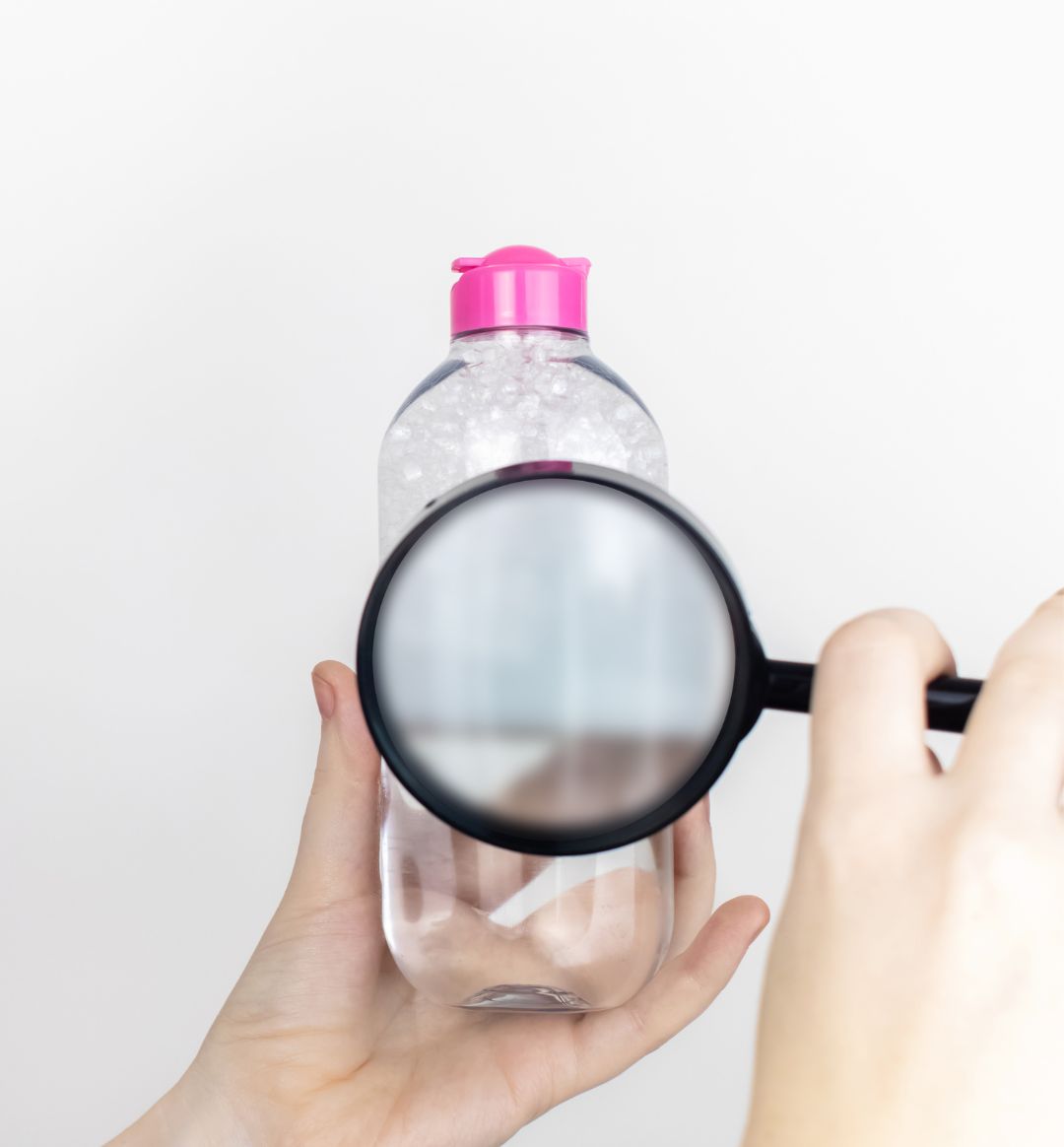
Did you know potential breast cancer-causing ingredients are lurking in your skincare, cosmetics, and hair care products? That’s right! Those are sneaky little preservatives called parabens, which are used to prevent bacteria from forming in products. These culprits get even sneakier hiding behind the names of methylparaben, ethylparaben, propylparaben, butylparaben or isobutylparaben.
Alarmingly, the American Chemical Society estimates that parabens are in 85% of personal care products. These are products you’re using daily, dozens of times a day, 365 days a year. As you might imagine, the effects of parabens can build up when used frequently. OK, so why are parabens bad for us? Anything we inhale, ingest, or put on our skin can be absorbed in the body and potentially cause damage over time, including disrupting normal hormone functions.
Studies show that parabens artificially mimic estrogens in the body, leading to a host of problems including various cancers including, and most notably, breast cancer. Estrogen is a female hormone that has been known to cause both normal and cancerous breast cells to grow and divide.
In the past decade, research has concluded that parabens were present in 99% of breast cancer tissues sampled. Breast cancer tumors contained measurable amounts of six parabens, found in relative concentrations that closely parallel their use in the synthesis of cosmetic and skincare products. The EWG suggests that repeated paraben exposure over time (and through the many items containing them) could cause serious harm.
Any personal care product that has an ingredient ending in -paraben should be on your list of products to avoid. Besides parabens, there are other potential cancer-causing ingredients you should avoid. The good news about these culprits is that they can easily be avoided, and replaced with safer alternatives. Read on to find out – it’s easier than you might think!
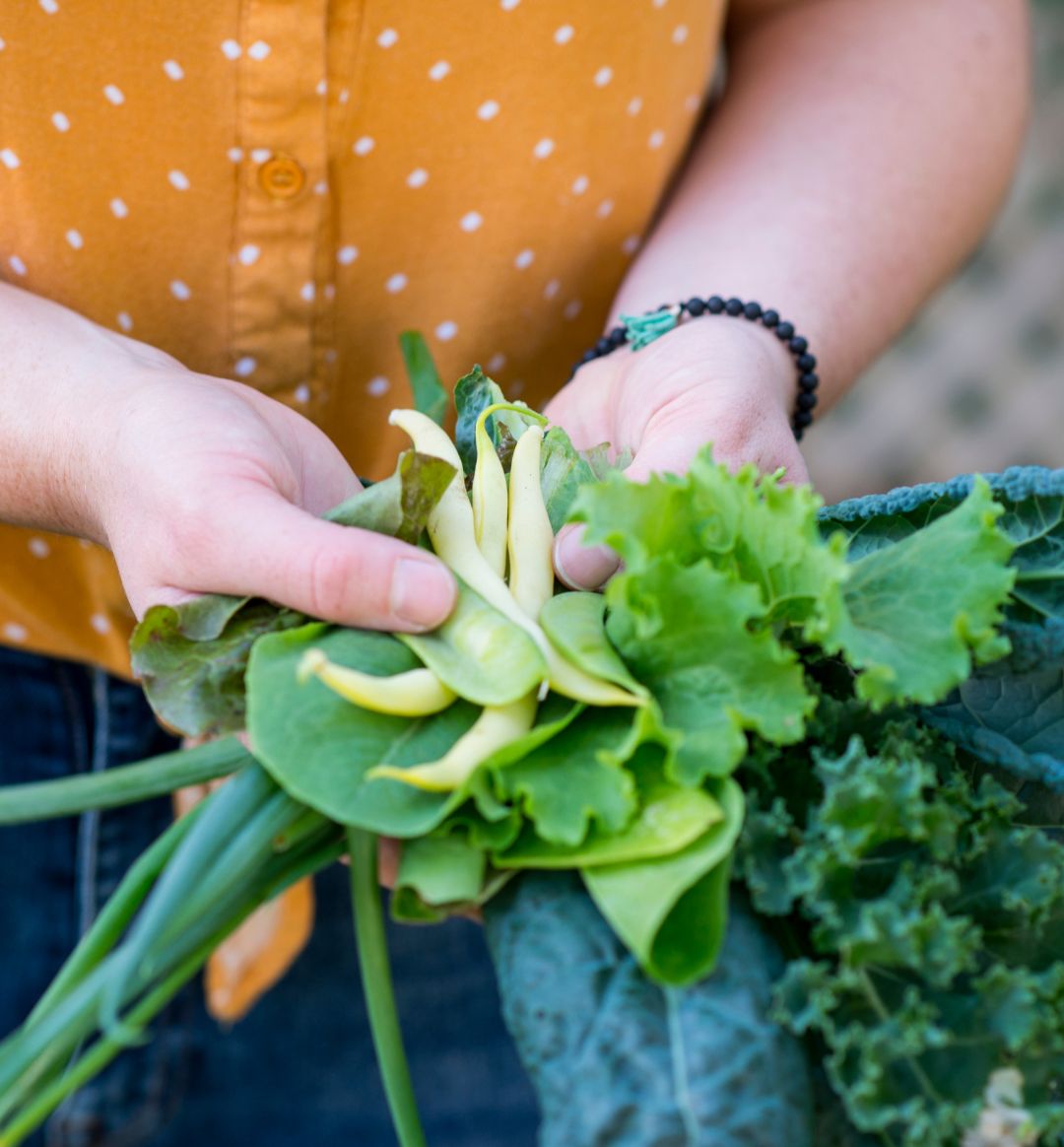
Improving your diet can improve your overall health, which might lessen your risk of breast cancer. Though no food or diet can prevent you from getting breast cancer, some foods can make your body the healthiest it can be and help keep your risk for breast cancer as low as possible.
You’ll want a high nutrient- and antioxidant-rich diet to help increase your protection from breast cancer. Some of these nutritious foods include:
#1. Dark Leafy Greens
Leafy greens, such as kale, spinach, and collard greens are loaded with antioxidants that can destroy free radicals that cause cancer. In a 2012 study published in the Journal of the National Cancer Institute, researchers learned that women who ate dark leafy greens had a far lower breast cancer risk than women who didn’t eat these vegetables.
#2. Berries
Berries contain antioxidants and vitamins that can protect cells, repair damaged cells, and slow the spread of cancer cells. Darker berries have 50% more antioxidants than lighter berries. So, load up on those blackberries and blueberries.
#3. Citrus Fruits
Citrus fruits contain vitamin C, folate, calcium, and many other nutrients that may prevent and fight breast cancer. In a 2013 study published in the Journal of Breast Cancer, researchers found that women who ate plenty of citrus fruits were 10% less likely to get breast cancer.
#4. Fermented Foods
Fermented foods are high in probiotics (and antioxidants and nutrients), which are live “healthy” bacteria and yeasts. They can help prevent your body from absorbing harmful toxins that cause breast cancer. Apple cider vinegar, kimchi, and sauerkraut are great sources.
#5. Fatty Fish
Certain types of fish contain healthy fats and antioxidants that can reduce inflammation associated with breast cancer. Fatty fish is best when baked or smoked, and includes salmon, tuna, and trout.
#6. Allium Vegetables
“Allium” is the Latin word for garlic. In a 2016 study published in the Journal of Breast Cancer, researchers found that women who ate lots of raw garlic had a lower risk of breast cancer. It might be tough sporting garlic breath everywhere, so feel free to mix it up with chives or leeks.
#7. Beans
Beans, beans, good for your heart. The more you eat, the more you help ward off breast cancer. The vitamins and minerals in beans can strengthen the immune system to make you less vulnerable to breast cancer. In a 2018 study published in Cancer Medicine, women who ate lots of beans reduced their breast cancer risk by 20%.
Other foods and drinks that can help lessen your risk of breast cancer, but are not guaranteed, and not limited to are; spices and herbs, like turmeric, ginger, and black pepper; cruciferous vegetables, such as arugula, bok choy, and broccoli. Some beverages known to help lessen the risk of breast cancer include fermented pomegranate juice, which contains compounds called ellagitannins that can potentially help lessen the growth of breast cancer cells.
Green tea is another beverage that might help lessen the onset of breast cancer. It contains compounds and various antioxidants that reduce a woman’s breast cancer risk. According to a 2014 study published in the World Journal of Clinical Oncology, women who drink at least 10 cups of green tea may be able to prevent breast cancer.
PRO TIP: Parabens also lurk in foods; the nerve! They’re identified as “E” numbers instead, like methylparaben (E218). Be on the lookout for typical food products that contain these preservative culprits!
Newsletter Subscribe
for more blog updates and exclusive discounts
Now that we've established some of the leading causes of breast cancer and risk factors, let's talk about some of the ways – besides diet – that can minimize breast cancer risks. Many harmful ingredients in conventional skincare products can affect your skin and health.
Toxic ingredients in your makeup and skincare can end up infiltrating your skin and into your bloodstream. Whether it’s preservatives to increase a product’s shelf life to synthetic solvents or binding agents in many cosmetics, many harmful ingredients can pose side effects to our health, wellness, and skin. Learning which cosmetic ingredients are linked to cancer can help you maintain a safe and healthy routine long term.
It’s best to avoid conventional skincare products and nix those harsh chemicals for natural ingredients. Opt for beauty and skin products that are good for you, your complexion, and the health of your breasts. Here are our top products for you and an easy daily routine for the best, healthiest skin!
Step 1: Cleanse your skin: Start by using a gentle cleanser like the 100% PURE Bakuchiol Cleanser to remove dirt, oil, and impurities from your skin as well as stimulate cellular turnover for a smoother complexion. Gently massage it onto damp skin, then rinse with lukewarm water and pat dry.
For heavy-duty makeup or makeup-free removal, our Blood Orange Cleansing Balm is a triple threat (makeup remover, cleanser, moisturizer) and a powerful first step in any natural skincare routine. No makeup? No worries. The antibacterial coconut oil and degreasing blood orange essential oil will grab dirt and oil from even makeup-free dry skin, giving your water-based cleanser a leg-up on dirt and oil in the next step.
Step 2: Tone (optional): If you typically use a toner in your routine, try applying the 100% PURE Flower Water Toner after cleansing to balance your skin's pH levels. This step is optional but can be beneficial for some individuals.
Step 3: Serum: If you’re looking for the perfect base for flawless makeup application, our Black Tea Grass Jelly Anti-oxidant Serum is formulated with bakuchiol and Puerh Black Tea Leaves, which combats free radical damage that causes signs of aging. Grass jelly is a reparative concoction of hydrating plant saccharides and super-soothing tiger grass, while concentrated antioxidants help plump and firm with an anti-aging effect.
For anti-aging and the safety of plant-based retinol, apply a few drops of our Bakuchiol serum onto your fingertips and gently massage it into your face and neck. Made with the clinically recommended maximum bakuchiol concentration, this serum is a must-have for those who are looking for long-lasting hydrating. It penetrates deep into the skin for a soft and supple feel.
Step 4: Moisturize: If you like the serum packed with the benefits of black tea and grass jelly, you’ll love pairing it with our Black Tea Grass Jelly Anti-oxidant Moisturizer! Formulated to sink deep into the skin, this moisturizer combats signs of aging by nourishing skin with powerful hydration and beneficial antioxidants so skin looks firmer, brighter, and more youthfully radiant.
For anti-aging and the safety of plant-based retinol, follow the Bakuchiol serum with the 100% PURE Bakuchiol Moisturizer to provide additional hydration and seal in the benefits of the serum. This anti-oxidant rich moisturizer provides intense hydration to boost collagen production and lessen the appearance of lines and wrinkles. Apply a small amount to your face and neck, gently massaging it using upward motions.
If you’re looking to boost elasticity and firmness, our Seaberry Moisturizer softens skin with hydrating aloe and rich shea butter, while fortifying with anti-aging antioxidants from grape and sea buckthorn – plus all the skin-efits of bakuchiol oil.
Step 5: Eye cream: Our fan-favorite Coffee Bean Caffeine Eye Cream features anti-inflammatory, caffeine-rich green tea and coffee to de-puff while increasing circulation to brighten dark circles. Concentrated with potent anti-aging vitamins and antioxidants to awaken the eye area, and nourishing rosehip oil for softer, more youthful skin around the eyes.
Step 6: Sunscreen: In the daytime, it's crucial to protect your skin from harmful UV rays. Finish off your routine by applying a broad-spectrum sunscreen with at least SPF 30. Sunscreen helps prevent sun damage and maintains the benefits of other actives. Plus, the addition of Yerba mate tea leaf fortifies skin with antioxidants and helps protect against damaging free radicals and environmental pollutants.
Our Green Tea SPF 30 Sunscreen defends against harmful UV rays with SPF 30 mineral protection while nourishing and rehydrating thirsty skin with green tea and aloe. It’s made with natural mineral zinc oxide and infused with the protective and anti-aging properties of green tea, plus the powerful antioxidant benefits of vitamin E.
Step 7: As needed – Face mask: Our 18.3% Active Ingredients Vitamin C Glow Max Bright Mask will turn a dull complexion into a refreshed, luminous, and hydrated glow with this enriching vitamin C concentrated treatment that will leave your skin utterly radiant.
Weekly: As needed, exfoliate your skin. Our Matcha Oat Face Scrub gently removes deep-set debris, buffs away dry patches, and maintains a toned complexion without redness. This nourishing face scrub uses matcha powder and colloidal oatmeal to calm and soften the complexion. Powerful antioxidants and caffeine from matcha green tea brighten skin and reduce redness, while vegetable glycerin maintains essential hydration for softer, more nourished skin.
PRO-TIP: Generally, it's recommended to exfoliate 1-2 times per week for normal to dry skin and 2-3 times per week for oily skin. Always listen to your skin and adjust accordingly.
As described above, if you have breast cancer risk factors, talk with your doctor about ways you can lower your risk and about screening for breast cancer. Screening means checking a woman’s breasts for cancer before there are signs or symptoms of the disease. This could be my means of a mammogram or an MRI, as well as clinical exams done by a health care provider and breast self-exams you can do.
Other ways you can help keep your breasts healthy are by being physically active, eating a well-balanced diet with plenty of nutrients and antioxidants, avoiding excessive drinking of alcohol, reframing from smoking, and avoiding prolonged exposure to chemicals. Toxic ingredients and chemicals include those in personal care products that have the potential to cause breast cancer. At 100% PURE, we are committed to formulating safe, cruelty-free, and natural makeup and skin care products.
How can breast cancer treatments affect the skin?
Sometimes radiation therapy can cause the skin on the part of your body receiving radiation to become dry and peel, itch, and turn red or darker. You may develop a rash or sunburn easily. Your skin may appear sunburned or become swollen. You may develop sores that become painful, wet, and infected. Some people may experience pigmentation changes.
What skincare routines are advisable for individuals undergoing breast cancer treatment?
A natural skincare routine with products geared to help sensitive skin is going to be your best bet. Avoid the sun as much as much as possible, as breast cancer treatments cause photosensitivity. When time in the sun is necessary, wear at least an SPF 30 sunscreen, as well as sunglasses, a wide-brimmed hat, and loose clothes that cover the skin.
Are there specific skincare products recommended for breast cancer patients?
For itchy, red, and reactive due to breast cancer treatments, stick to a natural skincare routine with products for sensitive skin. Look for Ingredients in products that are going to soothe, moisturize, nourish, and heal your skin, like antioxidants, and natural oils and butters.
Can certain skincare products interfere with breast cancer treatments?
Parabens can mimic the activity of the hormone estrogen in the body’s cells; this estrogenic activity is associated with certain forms of breast cancer. Estrogen is a female hormone that has been known to cause both normal and cancerous breast cells to grow and divide. Parabens have also been found present in breast tumors.
How can I manage skin dryness or irritation caused by breast cancer treatments?
First, avoid skincare products with harsh chemical surfactants, detergents, dyes, and fragrances that can inflame or sensitize your skin, as well as avoid excessive exposure to the sun and always wear SPF daily. Look for soothing and hydrating natural ingredients, like aloe rose, and oatmeal, and nourishing oils like jojoba and coconut oils. In addition, use natural skin care products for sensitive skin.
October can feel different for each of us — many wear pink in observance, some quietly observe the month, some feel grief, and others feel unseen or misunderstood. Breast Cancer Awareness Month is a chance for all of us to take time, and acknowledge and support those women and men whose lives have been affected by breast cancer.
Let’s do our part to help increase awareness of breast cancer and to promote regular screening, early detection, and treatment of breast cancer. We all want to stay the healthiest we can be and help keep our risk for breast cancer as low as possible.
- Tags: October-2023, Wellness
We carefully hand-select products based on strict purity standards, and only recommend products we feel meet this criteria. 100% PURE™ may earn a small commission for products purchased through affiliate links.
The information in this article is for educational use, and not intended to substitute professional medical advice, diagnosis, or treatment and should not be used as such.












